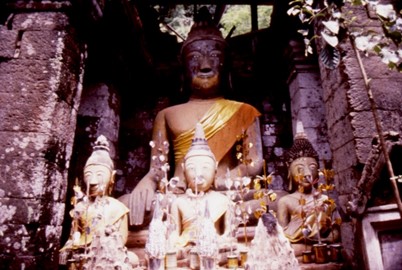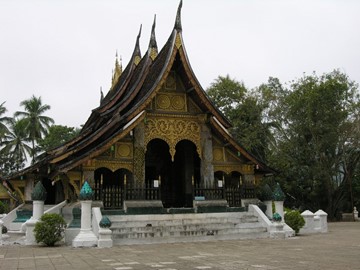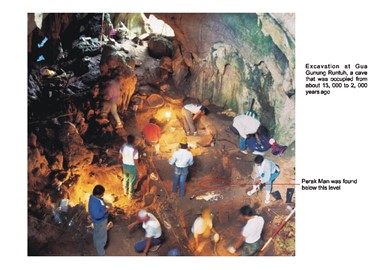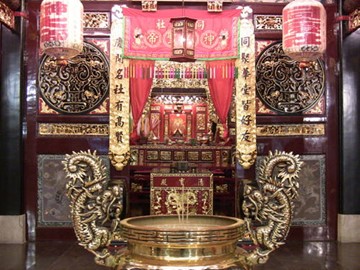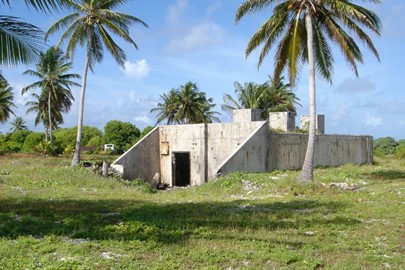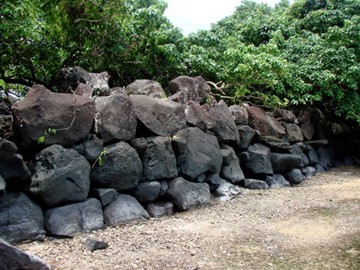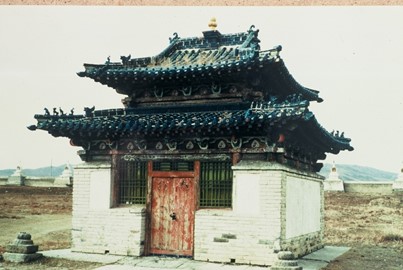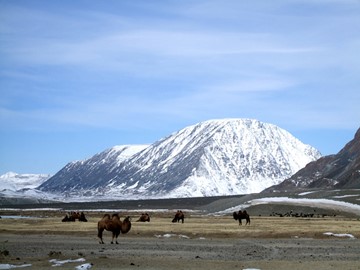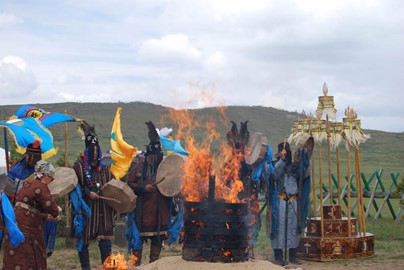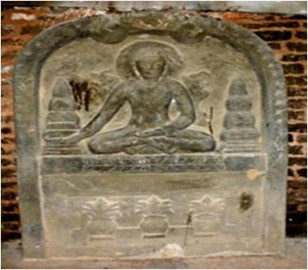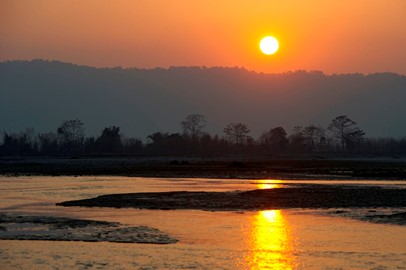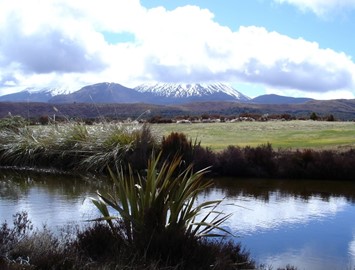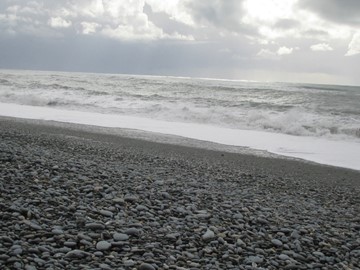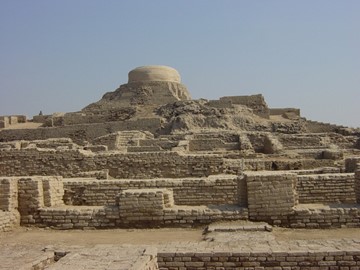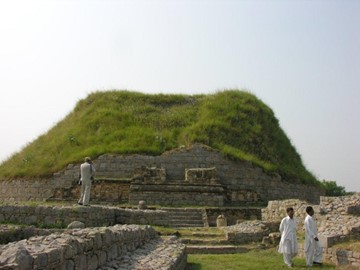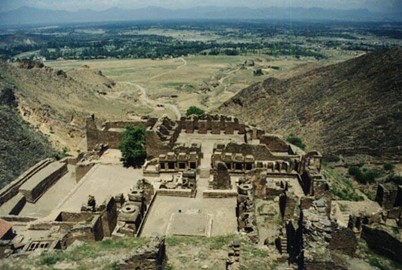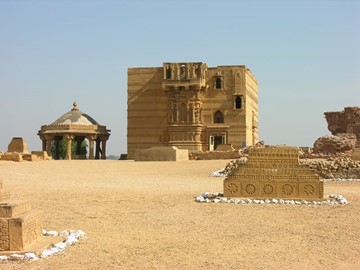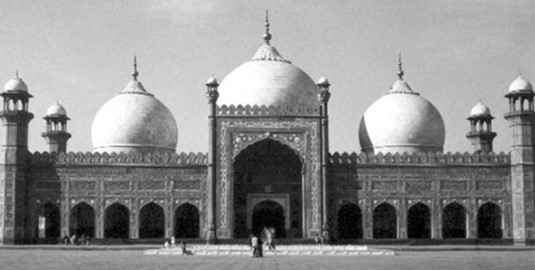region :: asia and the pacific
Vat Phou
Vat Phou, a UNESCO World Heritage site in Laos, is an ancient temple complex renowned for its stunning Khmer architecture and historical significance. Dating back to the 5th century, with major expansions between the 11th and 13th centuries, it features a terraced layout leading to a sanctuary atop a hill, aligned with a natural spring. This sacred site reflects a blend of spiritual traditions and sophisticated engineering, set against a dramatic mountainous backdrop.
Luang Prabang
Luang Prabang, a UNESCO World Heritage site in Laos, is a beautifully preserved town blending traditional Lao architecture with French colonial influences. Nestled along the Mekong River, it features gilded temples, saffron-robed monks, and a vibrant morning alms-giving tradition that highlight its rich cultural heritage. The town's historic core, including the ornate Wat Xieng Thong temple, reflects a unique fusion of local and European styles. Its tranquil charm and historical significance make it a stand... Read More
Kinabalu Park
Kinabalu Park, a UNESCO World Heritage site in Malaysia, is renowned for its rich biodiversity and stunning landscapes. Home to Mount Kinabalu, Southeast Asia’s highest peak, the park boasts over 4,500 species of flora and fauna, including rare orchids and the carnivorous pitcher plant. Established in 1964, it serves as a vital conservation area and a popular destination for ecotourism, offering visitors a chance to explore its unique ecosystems and natural beauty.
Gunung Mulu
Gunung Mulu, a UNESCO World Heritage site in Malaysia, is renowned for its exceptional biodiversity and stunning geological formations. This national park features vast limestone caves, including the world’s largest cave chamber, and dense rainforests teeming with unique flora and fauna. Its dramatic peaks, deep gorges, and hidden underground rivers make it a globally significant natural wonder, attracting researchers and adventurers alike.
Lenggong Valley
Lenggong Valley, a UNESCO World Heritage site in Malaysia, is an archaeological treasure trove showcasing human history spanning over 1.8 million years. This prehistoric site features ancient stone tools, skeletal remains, and cave settlements, including the notable Perak Man, one of Southeast Asia’s oldest human skeletons, dated to around 11,000 years ago. Its well-preserved open-air and cave sites offer critical insights into early human migration, technology, and culture in a tropical environment.
Melaka and George Town
Melaka and George Town, recognized as a UNESCO World Heritage site in Malaysia, are historic cities showcasing a unique blend of cultural influences from Malay, Chinese, Indian, and European traditions. Their well-preserved architecture, including colonial buildings, temples, and traditional shophouses, reflects centuries of trade and cultural exchange along the Straits of Malacca. This vibrant heritage, marked by distinct urban layouts and multicultural legacies, highlights their historical significance as... Read More
Bikini Atoll
Bikini Atoll, a UNESCO World Heritage site in the Marshall Islands, is a coral reef renowned for its historical significance and unique ecosystem. Between 1946 and 1958, it served as a testing ground for 23 nuclear explosions conducted by the United States, leaving behind a legacy of sunken warships and radioactive remnants. Today, the atoll’s pristine lagoons and diverse marine life attract researchers and divers, while its cultural importance reflects the resilience of the displaced Bikinian people.
Nan Madol
Nan Madol is a remarkable World Heritage site in Micronesia, often dubbed the 'Venice of the Pacific' for its unique construction. Built between the 13th and 17th centuries, it consists of nearly 100 artificial islets made of basalt and coral, linked by a network of canals. This ancient city served as a political and ceremonial center for the Saudeleur dynasty, showcasing advanced engineering and organizational skills. Its stone structures, including temples and tombs, reflect a complex society that thrived... Read More
Orkhon Valley
The Orkhon Valley, a UNESCO World Heritage site in Mongolia, is a historically and culturally significant region showcasing the evolution of nomadic pastoral traditions over more than two millennia. It features ancient archaeological remains, including the 6th-century Turkic memorials, the 8th-century Orkhon inscriptions—the oldest known Turkic writings—and the 13th-century capital of the Mongol Empire, Karakorum. The landscape, encompassing grasslands, rivers, and mountains, reflects the enduring relations... Read More
Petroglyphs of the Mongolian Altai
The Petroglyphs of the Mongolian Altai, a UNESCO World Heritage site, feature ancient rock carvings dating back to the Late Pleistocene and Early Holocene periods. These petroglyphs, etched into mountain slopes and rocky outcrops, depict a variety of animals, hunting scenes, and human figures, offering valuable insights into the prehistoric cultures and environments of the region. Recognized for their historical and artistic significance, they represent one of the largest collections of rock art in North As... Read More
Burkhan Khaldun
Burkhan Khaldun, a UNESCO World Heritage site in Mongolia, is a sacred mountain revered for its spiritual and historical significance. It is deeply tied to Mongolian culture as the legendary burial place of Genghis Khan and a key site in the development of the Mongol Empire. The mountain's pristine natural environment, including forests, rivers, and diverse wildlife, reflects its role as a place of worship and pilgrimage for centuries. Its designation highlights its importance as a symbol of national identi... Read More
Pyu Ancient Cities
The Pyu Ancient Cities, a UNESCO World Heritage site in Myanmar, encompass the archaeological remains of three major cities—Hanlin, Beikthano, and Sri Ksetra—flourishing between the 2nd century BCE and the 9th century CE. These cities showcase the Pyu civilization’s advanced urban planning, with impressive brick structures, stupas, and fortifications reflecting their architectural prowess and Buddhist influence. The site provides critical evidence of early Southeast Asian trade networks and cultural exchang... Read More
Sagarmatha
Sagarmatha National Park, a UNESCO World Heritage site in Nepal, is renowned for its stunning Himalayan landscape, including the world’s highest peak, Mount Everest. Established in 1976, the park protects a diverse ecosystem of rare flora and fauna, such as snow leopards and Himalayan tahrs, alongside unique Sherpa culture and sacred monasteries. It serves as a critical conservation area and a global symbol of natural beauty and biodiversity.
Chitwan
Chitwan National Park, a UNESCO World Heritage site in Nepal, is renowned for its rich biodiversity and conservation efforts. Established in 1973, it hosts a variety of endangered species, including the Bengal tiger, one-horned rhinoceros, and Gharial crocodile, thriving in its lush forests, grasslands, and riverine ecosystems. The park also holds cultural significance with the indigenous Tharu communities, offering a blend of natural beauty and traditional heritage. It stands as a premier destination for w... Read More
Lumbini
Lumbini, a UNESCO World Heritage site in Nepal, is renowned as the birthplace of Siddhartha Gautama, the founder of Buddhism, born in 563 BCE. This sacred site features the ancient Maya Devi Temple, marking the exact spot of his birth, alongside the Ashokan Pillar, erected by Emperor Ashoka in 249 BCE to commemorate his visit. The surrounding monastic zones, with ruins of stupas and monasteries, reflect its historical significance as a pilgrimage center. Today, Lumbini attracts visitors worldwide for its sp... Read More
Kathmandu Valley
Kathmandu Valley, a UNESCO World Heritage site in Nepal, is renowned for its rich cultural heritage and historical significance. This ancient region is home to an array of stunning temples, palaces, and monuments, reflecting a unique blend of Hindu and Buddhist traditions. Its well-preserved medieval architecture, intricate wood carvings, and vibrant festivals highlight the artistic and spiritual legacy of the Newar people, the valley’s indigenous inhabitants. The site’s enduring charm lies in its ability t... Read More
Tongariro
Tongariro National Park, a World Heritage site in New Zealand, is renowned for its stunning volcanic landscapes and cultural significance. Established in 1887, it features active volcanoes, including Mount Tongariro, Mount Ngauruhoe, and Mount Ruapehu, which offer dramatic scenery and diverse ecosystems. The park holds deep spiritual importance to the Māori people, reflected in its designation as one of the world’s first dual World Heritage sites for both natural and cultural value. Visitors can explore its... Read More
Te Wahipounamu
Te Wahipounamu is a UNESCO World Heritage site located in New Zealand, recognized for its outstanding natural beauty and geological significance. It encompasses a diverse landscape of rugged mountains, glaciers, fjords, and rainforests, hosting a rich variety of unique flora and fauna, including ancient species like the takahe and kiwi. The site is also culturally significant, tied to Māori heritage and traditional resource use, making it a globally important conservation area.
Sub Antarctic Islands
The Sub-Antarctic Islands, a World Heritage site in New Zealand, are a remote and pristine collection of island groups renowned for their unique biodiversity and rugged natural beauty. These islands host a variety of rare and endemic species, including seabirds, penguins, and marine mammals, thriving in an environment shaped by harsh weather and isolation. Recognized for their ecological significance, they serve as critical habitats and breeding grounds, offering a living testament to the resilience of natu... Read More
Moenjodaro
The Archaeological Ruins at Moenjodaro, a UNESCO World Heritage site in Pakistan, represent one of the best-preserved urban settlements of the ancient Indus Valley Civilization, dating back to around 2500 BCE. This remarkable site showcases advanced engineering with its sophisticated drainage systems, brick-built structures, and a well-planned grid layout, reflecting the ingenuity of its Bronze Age inhabitants. Key features include the Great Bath, a large public water tank, and the so-called Granary, offeri... Read More
Taxila
Taxila, a UNESCO World Heritage site in Pakistan, is an ancient city renowned for its historical and cultural significance. Dating back to the 6th century BCE, it served as a major center of learning and trade, influenced by Persian, Greek, and Buddhist civilizations. The site features a wealth of archaeological remains, including stupas, monasteries, and urban settlements, reflecting its role as a crossroads of ancient cultures. Today, Taxila stands as a testament to the region’s rich past, offering valuab... Read More
Takht i Bahi and Sahr i Bahlol
Takht-i-Bahi and Sahr-i-Bahlol, a UNESCO World Heritage site in Pakistan, represent a well-preserved Buddhist monastic complex from the 1st to 7th centuries CE. Takht-i-Bahi features a hilltop monastery with intricately designed stupas, meditation cells, and assembly halls, showcasing ancient Buddhist architecture and urban planning. Nearby, Sahr-i-Bahlol contains archaeological remains of a thriving settlement linked to the monastery, offering insights into the region’s historical and religious significanc... Read More
Makli, Thatta
Makli, Thatta, a UNESCO World Heritage site in Pakistan, is one of the largest necropolises in the world, showcasing an extraordinary collection of funerary architecture spanning from the 14th to 18th centuries. This historic cemetery features intricately carved tombs, mausoleums, and monuments, reflecting the rich cultural and artistic heritage of the Samma, Arghun, Tarkhan, and Mughal dynasties. The site stands as a testament to the region's historical significance and architectural prowess, drawing schol... Read More
Fort and Shalamar Gardens
The Fort and Shalamar Gardens in Lahore, a UNESCO World Heritage site in Pakistan, represent a stunning blend of Mughal architecture and landscaped beauty. The Fort, a sprawling citadel, showcases intricate palaces, halls, and mosques adorned with detailed tile work and marble, reflecting the grandeur of the Mughal Empire. Adjacent to it, the Shalamar Gardens, designed in the Persian charbagh style, feature terraced lawns, fountains, and pavilions that once served as a royal retreat. Together, they stand as... Read More
Rohtas Fort
Rohtas Fort, a UNESCO World Heritage site in Pakistan, is a remarkable 16th-century fortress built by Sher Shah Suri to defend against Mughal incursions. This sprawling military complex showcases a blend of Afghan and Indian architectural styles, featuring massive walls, imposing gates, and strategic bastions designed for defense. Its historical significance lies in its role as a symbol of power and resilience, reflecting the engineering prowess of its time. Today, it stands as a well-preserved testament to... Read More
